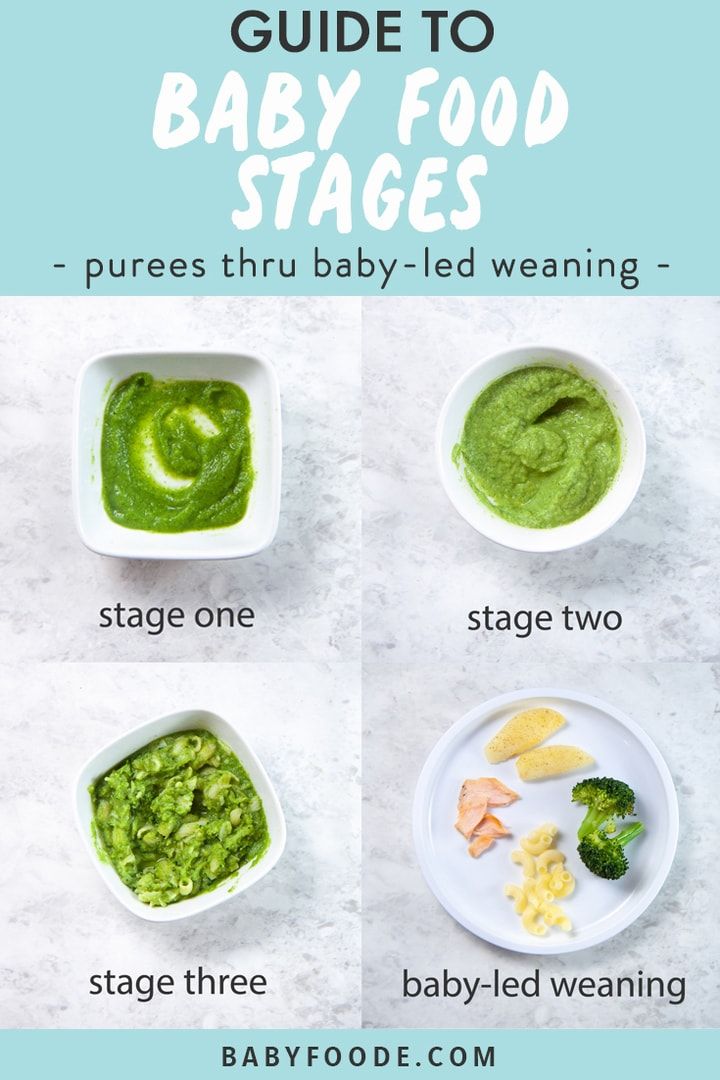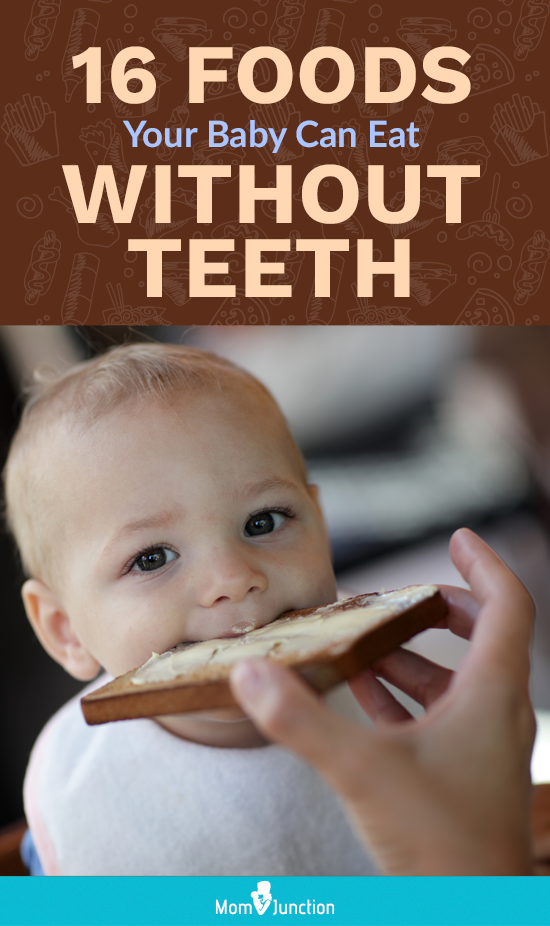Malayalam baby food recipes
Top Baby Food Recipes Kerala Style (Upto 1 Year)
You are here: Home / Baby Care / Top Baby Food Recipes Kerala Style (Upto 1 Year)
By Trendy
18
SHARES
Today, I just want to give a few quick baby food recipes Kerala Style. Since I have published few other articles on homemade baby foods of 6-12 months babies, this article is mainly focusing on the making of Kerala baby foods.
I used to see my grandma preparing different kinds of baby foods for her grandchildren. I used to wonder sometimes, how she prepares so fast and efficient, that too much care and love! Frankly, I copied a lot of recipes from her and start making for my little one.
Sharing main Kerala baby food recipes of grandma here.
Remember, Breast Feeding can’t replace any foods recommended here. All the other foods are just an addition to that.
1. Ragi Kurukku (Panjapullu – Muthari)
Ingredients :
- Ragi Flour – 1-2 tbsp (homemade Ragi Flour is good.
Qty depends on your kid’s eating behavior)
- Rock Sugar (kalkkandam)
- Pure Ghee – 1/4 cup
- Milk or Water – 1 cup
Preparation: Add 1-2 tsp of Ragi powder in a pan, add water and slowly starts to dilute the mixture by adding rock sugar (or Panakarkandu) and Pure Ghee. Ragi Kurukku is one among the best baby foods for kids.
Ragi Kurukku- Baby Food Recipe Video in Malayalam Explained by Molly
Note: If the child has symptoms of cold and cough, better avoid giving Ragi.
Buy Organic Ragi Flour.
2. Carrot/ Beetroot Mash
Ingredients :
- Carrot – 1 small piece
- Beetroot – 1 small Piece
- Salt – 1 small pinch
- Water – to boil
Preparation: Peel out both the carrot and beet root nicely. Boil it in water, adding a pinch of salt until it ready to mash. Once ready to mash, take out of water, drain and smash it nicely. If need, add little lukewarm water to make it semi liquid.
Boil it in water, adding a pinch of salt until it ready to mash. Once ready to mash, take out of water, drain and smash it nicely. If need, add little lukewarm water to make it semi liquid.
Note: If the child resists to eat, mix with boiled rice and make it as a semi solid recipe, which would be great for the baby.
3. Boiled Rice
Ingredients :
- Rice – 4-5 Tablespoon
- Salt – 1 small pinch
- Ghee – 1/4 Teaspoon
Preparation: We should give boiled rice to babies of age from 7 months. Boiled rice is rich in Carbohydrates. Take 4-6 tablespoons of boiled rice, add with boiled rice water(kanjivellam) and grind in a mixer till it become semi fluid. Feed it nicely by adding ghee too. Adding boiled vegetables are too good for the health of babies.
Note: Adding Ghee is good to free motion avoiding constipation.
Find a few more quick baby foods here.
Ingredients :
- Raw Banana Powder – 2-3 tablespoon
- Rock Sugar /Karuppetty /Kalkkandam – For Taste
- Water
- Ghee(optional)
Preparation : Mix 2-3 tablespoon of banana powder with 1/2cu p water. Heat this mixture on a low flame and stir continuously until it sets. Later add Rock Sugar /Karuppetty /Kalkkandam and 1 to 1/2 tsp ghee. Around 45-75 ml is ideal for a midday meal. Feed the baby with medium temperature.
Heat this mixture on a low flame and stir continuously until it sets. Later add Rock Sugar /Karuppetty /Kalkkandam and 1 to 1/2 tsp ghee. Around 45-75 ml is ideal for a midday meal. Feed the baby with medium temperature.
Ethakka Kurukku – Baby Food Recipe Video Malayalam Explained by Molly
Note: It is always advised to feed the food with medium temperature.
5. Njavara Kurukku (Njavara / Navara Rice Mix)
Ingredients :
- Njavara Rice Powder (Navara Rice) – 2-3 tablespoon
- Rock Sugar /Karuppetty /Kalkkandam – For Taste
- Water
- Ghee(optional)
Preparation: Add 2-3 tsp of Njavara Rice powder in a pan, add water and slowly starts to dilute the mixture by adding rock sugar (or Panakarkandu) and Pure Ghee.
Njavara Kurukku – Kerala Baby Food Recipe Video Malayalam Explained by Molly
Note: Navara rice is available to buy from Ayurvedic stores, or else you can purchase original Kerala Njavara rice from Amazon here.
6. Potato Mash
Ingredients :
- Potato – 2 small pieces
- Salt – 1 small pinch
- Water – to boil
Preparation: Peel out potato nicely. Boil it in water, adding a pinch of salt. Once ready to mash, take out of water, drain and mash it nicely. If need, add little lukewarm water to make it a semi fluid food.
There are many more baby foods are available in the traditional Kerala style, will be writing soon in my future post.
Filed Under: Baby Care, Parenting Tagged With: Baby Food Recipe, Home Made Baby Food, Kerala Baby Foods
Reader Interactions
Baby food chart with recipes for 7 months to 1 year Indian baby & toddlers
By Swasthi on August 6, 2022, Comments,
Indian baby food chart along with a list of tried & tested 60 Indian baby food recipes. Thanks to the readers who led me to this post on Indian baby food chart. Before I take you to the details of the food chart and the food recipes, please be informed that this post is based on my experience. I have honestly expressed my views and opinions on easy baby weaning so that it could be helpful to new mothers.
Please read the comments below before posting your queries since similar queries may have been answered.
Well, some of my tips might look like old wives tales since they are based on Ayurveda, but I do trust them in growing healthy and happy babies. However I suggest consulting your elders or pediatrician before you follow any new foods or tip that have been mentioned here.
However I suggest consulting your elders or pediatrician before you follow any new foods or tip that have been mentioned here.
For the past several years, I have been consistently sharing & updating baby recipes especially for a good weight gain. You can find all the latest recipes or ideas on the baby toddler recipes section.
Readers who have been asking for suggestions on foods to gain weight, please check this detailed post on best foods for weight gain in babies & toddlers.
Is this baby food chart suitable to my Baby?
This Indian baby food chart is a generalized one suitable for most babies. However i suggest you to use your judgement whether to include or not, certain ingredients in your babies diet based on your babies allergies, intolerance, appetite, likes and dislikes.
I have tried to link most Indian baby food recipes that I have posted earlier on this blog. Many were written almost 5 years ago and are updated regularly with new tips based on the readers reviews.
This Indian baby food chart was developed by me based on what i fed my 2 kids, whose birth weight was 3.3 kgs and 3.4 kgs. The ideas were basically drawn from the health and baby weaning booklets that were given to us during our visits to the singapore clinics, hospitals and few from clinics in Bangalore.
This chart is also suitable to babies who were preterm born or were underweight. However I suggest mums with such babies to consult a pediatrician if you are skeptical about these foods.
This post will be updated, to include tips and other information. You can leave a comment here if you want to know anything specific which will be answered. Please feel free to share or discuss your experiences, views, problems that you encounter while weaning your babies in the comment section. It could be helpful to other readers, it’s through sharing we can learn.
When to introduce food to baby – 6 months to 1 year
Here is a brief guide on the right time to introduce foods. But how to introduce them can be found in the recipe posts. Example: Oats or oatmeal – I have mentioned clearly how to choose them and the kind you can use and how to prepare it for a baby.
But how to introduce them can be found in the recipe posts. Example: Oats or oatmeal – I have mentioned clearly how to choose them and the kind you can use and how to prepare it for a baby.
You can find a a detailed baby food chart for 6 months old baby here along with recipes.
This Indian baby food chart and the baby food recipes have been developed for a good weight gain in babies.
Indian baby food chart for babies above 7 months or from 8 months
| Milk – (skip milk if baby wakes up after 8 am, make a milk based breakfast from breakfast section) |
| One of the following: APPLE RICE CEREAL Quick fix breakfast (for 8 to 18 months): |
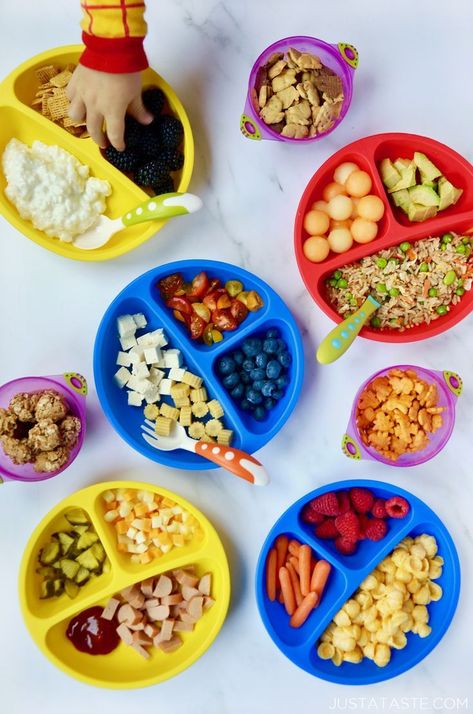 15 am 15 am |
| One of the following: Steamed apple (raw apple for babies older than 12 months) |
| Try using whole grains like RAGI OR FINGER MILLET Try one of the following DALIA KHICHDI (vegetable broken wheat food) For a lighter meal, if the baby has colic mashed rice with dal ka paani with a pinch of ajwain(strained dal soup) |
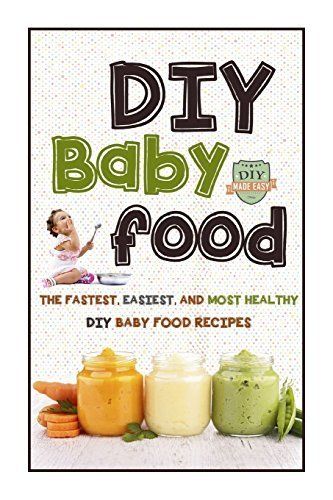 30 to 3 pm 30 to 3 pm |
| Fruits or steam cooked mashed veggies |
| One of the following: Large serving of Milk |
| Please Note: Feeding late can cause indigestion and the infant may not sleep due to colic. Avoid feeding heavy foods. Dinner should always be light, nutritious, mostly vegetable based. For babies from 10 to 12 months prefer light foods from breakfast section. Avoid egg & nuts. Babies above 12 months : Any foods mentioned in the breakfast and lunch can also be served for dinner. Other options mashed rice with dal ka paani (strained dal soup) |
| Large serving of Milk. Make sure there is a gap of at least 1 hour 30 mins in between the completion of dinner and milk. For babies above 12 months: If the baby is still hungry after the milk, can feed some light crackers. |
Related post: how to make ragi flour for babies or toddlers’ porridge
Tips to increase the appetite in babies
1. Try to serve fruits 1 ½ to 2 hours before a meal. They tend to make the infant feel hungry naturally. Do not serve fruit with a meal.
2. Do not mix fruits with dairy especially milk. It leads to indigestion.
It leads to indigestion.
3. Babies need exercise, let them play and crawl or run around. Don’t confine them to a small area. For toddlers / babies who can walk, a small walk in the neighborhood before a meal can make them hungry.
General Tips:
1. If you have a very fussy baby, avoid milk in the early morning and serve milk based breakfast mentioned in the table.
2. Serving bread or any other baked stuff to babies, leads to colic or bloating due to the ingredients like baking soda, powder, yeast etc.
3. Limit crackers or biscuits to only once a day, avoiding is however better.
About Swasthi
I’m Swasthi Shreekanth, the recipe developer, food photographer & food writer behind Swasthi’s Recipes. My aim is to help you cook great Indian food with my time-tested recipes. After 2 decades of experience in practical Indian cooking I started this blog to help people cook better & more often at home. Whether you are a novice or an experienced cook I am sure Swasthi’s Recipes will assist you to enhance your cooking skills.
Whether you are a novice or an experienced cook I am sure Swasthi’s Recipes will assist you to enhance your cooking skills.
Follow Swasthi’s Recipes
Email sign up to receive awesome Swasthi’s Recipes in your inbox *
Popular Recipes
Featured Recipes
Puree recipes for babies from 6 months
When your baby is 6 months old, it's time to start complementary foods . For many children, discovering new tastes and textures is a pleasure, but for many, an unpleasant discovery. This is a stage that all children must go through, and with a lot of patience, you will soon get through the introduction to food.
At the beginning of this step, your pediatrician will give you some advice on how this insertion of should be done. So gradually your baby will expand the list of foods that he can take, which will help you when preparing meals.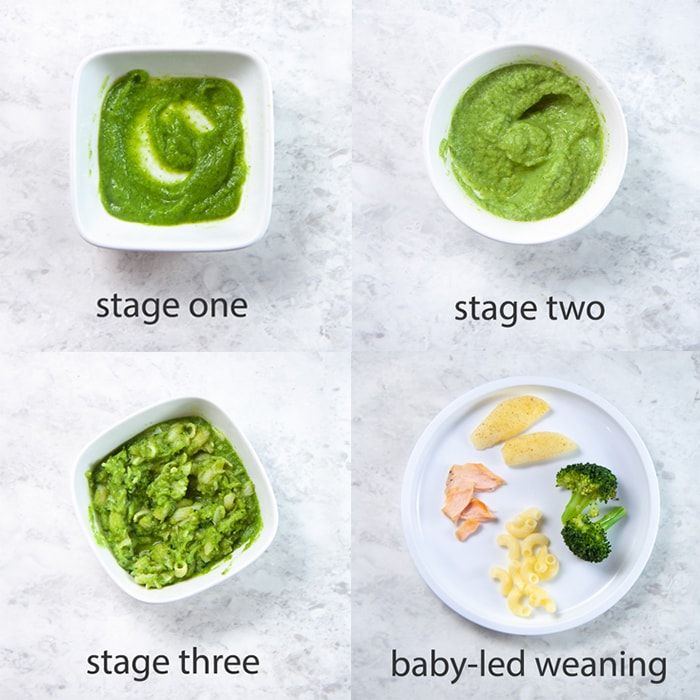
No wish list yet?: Create your free birth list
Making baby puree can be a bit boring as there are hardly any ingredients. However, it is important that baby food is not boring and always the same. In this way you can prevent him from hating her and you nurture your child's taste from a very early age.
Below you will find some recipes for babies who start their journey with complementary foods. Before proceeding with recipes, remember that this is very important enter food one by one . This way you can easily check if the food is right for you, if you don't like it or if it causes a reaction. If you introduce several products at once, it will take a long time to figure out which one caused the reaction.
Index
- 1 pumpkin-grade cream
- 2 Sweet vegetable puree
- 3 puree made of sweet potatoes
- 4 vegetable broth
Pumpkin-gram cream
- The ingredients are: 2 carrots, a good piece of pumpkin, 1 large potato and a leek.
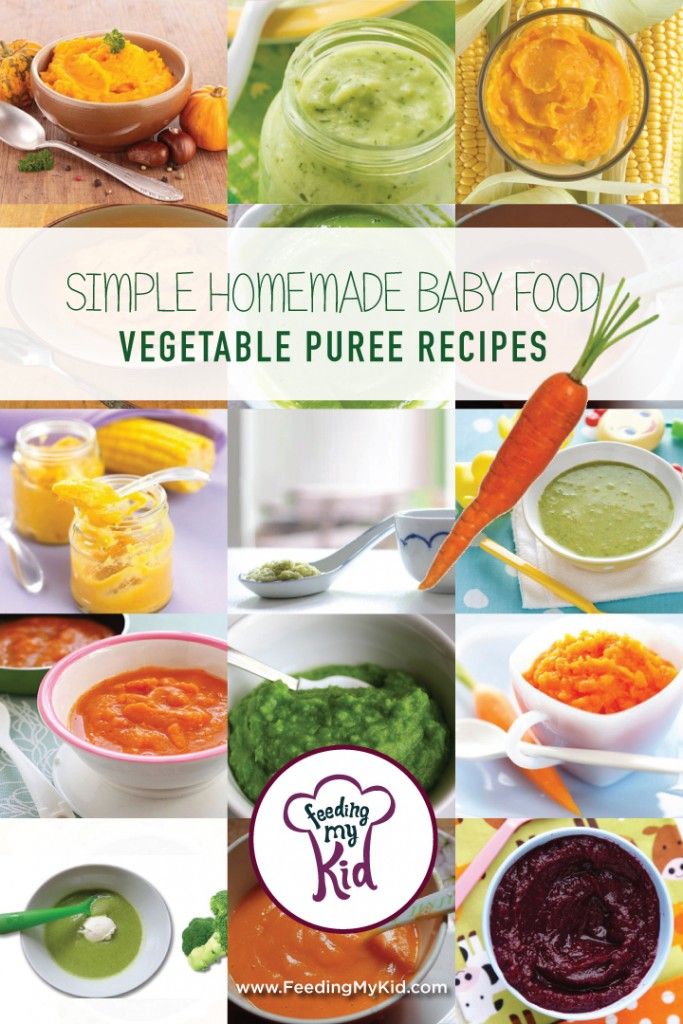 We clean all the ingredients and rinse well and dry with blotting paper, chop all the vegetables. We put a large casserole on the fire and drip a little oil, add vegetables and sauté for a couple of minutes . Add water until it covers the vegetables and cook for about 15 minutes. To finish, we beat with a hand mixer and add a little extra virgin olive oil.
We clean all the ingredients and rinse well and dry with blotting paper, chop all the vegetables. We put a large casserole on the fire and drip a little oil, add vegetables and sauté for a couple of minutes . Add water until it covers the vegetables and cook for about 15 minutes. To finish, we beat with a hand mixer and add a little extra virgin olive oil.
Sweet vegetable puree
- In this case we need 2 carrots, 1 turnip, 1 large sweet potato and 1 large potato. All ingredients are cleaned, washed and dried. Cut into large pieces and fry in a pan with olive oil. When the vegetables have taken on color, add water until it is covered and cook for about 20 minutes. Later, grind everything well and add half a glass of milk , you can use breast milk or subsequent milk.
Sweet potato puree
- We will need 2 leeks, 2 large sweet potatoes and 50 g frozen peas. First, peel the sweet potatoes and wash well, dry and leave.
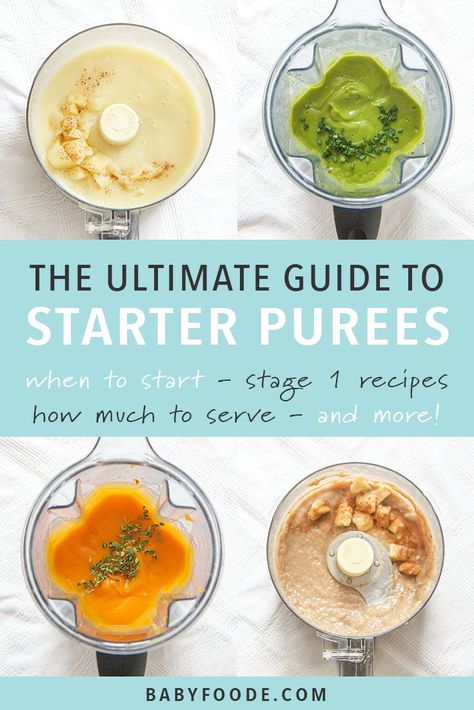 We clean the leek well, removing the remnants of the soil , for this we make several cuts in the middle in the form of a cross. Cook the casserole by drizzling with oil, fry the leeks and sweet potatoes and add homemade vegetable broth. After 10 minutes, add the peas and cook for another 5-7 minutes. Blend with a blender and add a little extra virgin olive oil.
We clean the leek well, removing the remnants of the soil , for this we make several cuts in the middle in the form of a cross. Cook the casserole by drizzling with oil, fry the leeks and sweet potatoes and add homemade vegetable broth. After 10 minutes, add the peas and cook for another 5-7 minutes. Blend with a blender and add a little extra virgin olive oil.
Vegetable Broth
Vegetable Broth is the base of any puree and can always be made with water, but Broth will add vitamins and flavor to all dishes. You can cook quite a lot and freeze in different containers, so you'll always have a supply when you need to cook.
- Add 2 large onions, peeled, 1 carrots, 1 stalk celery, 1.5 peeled turnips, fresh parsley and bay leaf. Fry the vegetables in olive oil for a few minutes, cover with XNUMX water and simmer for about an hour. Then strain the decoction well squeeze vegetables to get all the juice .

As your child grows, you can chop vegetables less, i.e. instead of using a mixer. you can mash vegetables with a fork . This way it adapts better to changes and strengthens the jaw for future textures.
All recipes are large quantities, so you can freeze in individual containers . Each time you make a puree, you'll have it within a few days, so you'll always have jars ready in the freezer. If one day you don't have time to cook or you go out to eat, you will always have food ready for your child.
Finally, remember that you should not add salt to your baby's food, even if you think the food will be insipid. The baby is not aware of the taste of salt, so he will not miss it if he does not know.
The content of the article complies with our principles of editorial ethics. To report a bug, click here.
You may be interested
what it is, when to start and what options to try – Drink-Drink
Skip to content
Mar 25, 2023
Try it!
DrinkDrinkAdmin
Contents
- What is stage 2 baby food?
- Stage Identification by Brand
- What is the difference between Stage 1 and Stage 2 meals?
- When and how should I start feeding my baby 2nd stage complementary foods?
- What are your baby food options for stage 2?
- Store-bought baby food stage 2.
- Homemade Baby Food Stage 2
- Conclusion
Accompanying your child through the different stages of learning how to eat real food is an exciting journey. Sometimes, along with a sense of pride - - you can feel a little confused. How should you navigate milestones?
What is stage 2 baby food?
Let's start from the beginning: what do the stages of baby food mean?
Rome wasn't built in a day, and your child's digestive system won't jump from liquid to solid in one day either. That's what baby feeding stages are for - to help your baby manage the mechanics of eating and ease the transition to your baby's digestive system.
Defining milestones by brand
Although the different baby food steps are not standardized (if they were, your life would be easier!), most popular brands more or less follow these four steps:
- Step 1: From 4 up to 6 months (one-ingredient watery puree)
- Stage 2: 6 to 9 months (thicker texture, strained or pureed)
- Stage 3: 10 to 12 months (porridge with soft, chewy little pieces )
- Stage 4: After 12 months (food that you can eat with your fingers and small soft pieces of food that you share with your dinner)
What is the difference between eating the first and second stages?
Stage 1 food is quite watery. They turn into a smooth paste that runs off a spoon easily, so stock up on bibs. These products usually consist of one ingredient: oatmeal, apples, carrots. Your child will start eating about half a teaspoon of this.
Stage 2 food becomes more exciting. They are strained or ground into a thick paste. They are made from a combination of foods that can include legumes and even meat or fish. They can combine flavors, such as fruit and vegetable blends. Your child's appetite is growing and you will have to keep up with larger portions.
When and how should I start feeding my baby 2nd stage complementary foods?
Around 6 to 9 months of age, your baby is probably ready to switch to stage 2 complementary foods. Not every child will stick to this schedule, simply because every child is a separate world.
Here are a few signs that your baby is ready to move on:
- Tongue reflex: At around five months, your baby will begin to lose the tongue thrust reflex and will not immediately push out the food you are trying to feed.
- More Please: They will easily eat the first stage foods and look hungry to eat more.

- Variety: They ate foods from all food categories (vegetables, fruits, legumes, grains, meat) and showed no allergies or intolerances.
- Delight: They easily eat a spoonful of food in stage 1, swallow and swallow with pleasure.
At this exciting stage, feel free to give your child most of the foods. By offering them a wide range of flavors and textures, you give them the foundation for a healthy diet and also make it easier for you. Be aware of the following safety considerations:
- Choking Hazard: Avoid nuts, seeds, and popcorn at this stage. And don't forget to cut round foods like grapes and hot dogs lengthwise.
- No honey: Babies under 12 months old should not be given honey as it can lead to botulism.
- No Juice: Follow AAP recommendations and stick to breast milk, formula or a little water and stay away from juices.
- Safe feeding: Always fasten your child to a high chair and supervise him while he eats.

And if you're curious about peanuts, here's the scoop: 2017 National Institutes of Health report suggests giving babies peanut-containing foods as early as 4 months of age. (Wait up to 6 months for children with mild to moderate eczema.)
Surprised? Do not be. A recent study showed that Israeli children rarely suffer from peanut allergies because they have been chewing bamba, a peanut-based snack, as early as 3 months old. Talk to your doctor about safe ways to include peanut products in your baby's diet.
What are your baby food options for stage 2?
What is included in the stage 2 baby food menu? Basically, you can go the store or home route. Or you can mix both depending on how much time you have. It depends on you and your personal schedule.
Here are some delicious ideas for both.
Store-bought baby food stage 2.
- Plum: These organic blends come in easy-to-carry bags. Try pear, spinach and peas, or banana and pumpkin.

- Beech-walnut: Available in tins and bags. Serve a few apples and bananas or pineapple, pear and avocado.
- Best in the world: Another organic option, in bags or jars. Try sweet potatoes, barley and chickpeas, or pasta with tomatoes and white beans.
- Gerber: A classic served in plastic jars, jars or bags. Flavor combinations include peach mango and dinner with oatmeal or chicken noodles.
Remember to keep an eye on your baby while he eats. Bags are convenient, but caps can be a choking hazard. Glass jars can break, so keep them out of the reach of children. Your child should always enjoy snacks and meals under close adult supervision.
Homemade Baby Food Stage 2
Cooking up a storm for your baby's nascent taste buds doesn't have to be a daunting task at this stage. Here are some recipes to help you. (You can find more baby food recipes here.)
Don't skimp on spices and herbs: your little one will appreciate the extra flavor and the micronutrients they contain will boost their immune system.